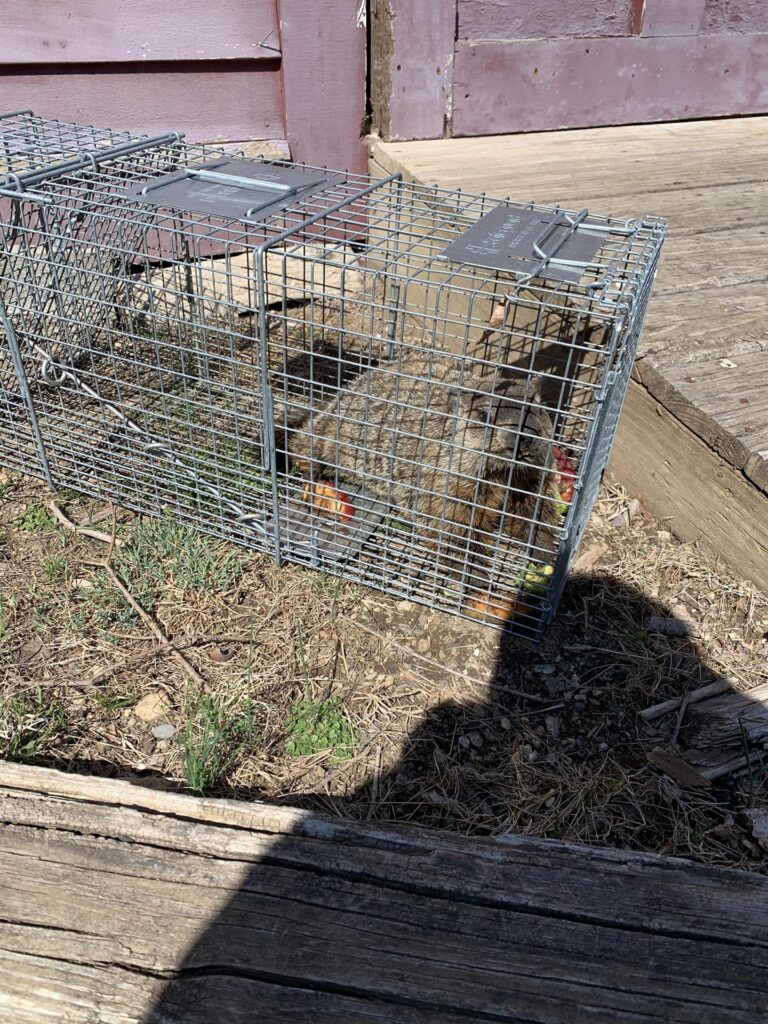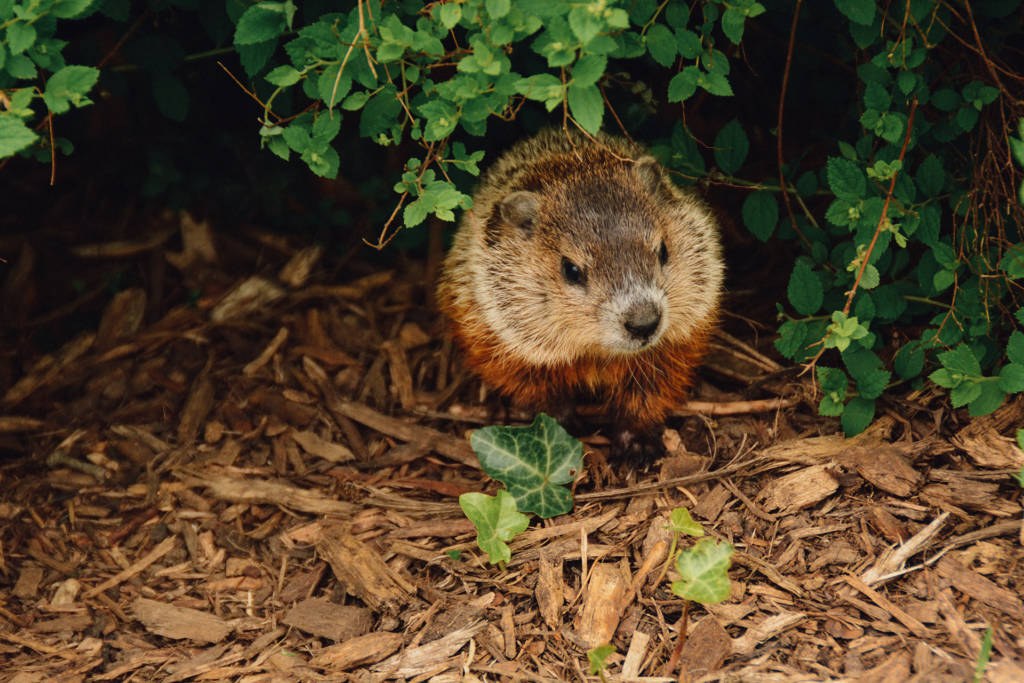Woodchuck Removal
Woodchuck Removal
Woodchucks, also known as groundhogs, are a well-known pest across Connecticut. While we may know them best for their infamous ability to tell us when winter will end on Groundhog Day (February 2) each year, woodchucks can be quite a nuisance in and around your home.

About woodchucks
Woodchucks are another member of the squirrel family. They can be found all over North America, including Alaska, and are especially common throughout Connecticut. Because Connecticut was mostly forested land before the early settlers arrived in what is now the US, woodchucks had free rein across the scattered forest openings. Over time, woodchucks adapted to a changing landscape and the animal is more abundant now than it was during Connecticut’s early history. Give Gray Brothers Wildlife LLC a call if you’re struggling with a woodchuck problem.
Woodchuck habits
Woodchucks are incredible diggers, and they create burrows that can range from eight to 66 feet in length. They often have complicated routes, multiple exits, and many chambers where the woodchucks can reside. In most areas, woodchucks will hibernate for the winter months (roughly October to March). For this reason, Groundhog Day has faced criticism throughout recent history for interrupting the natural hibernation patterns for these animals.
Woodchucks are primarily herbivores, but will sometimes eat grub and other small insects when available. Woodchuck breeding season spans from early March to late April each year, immediately following the hibernation period. To learn more about groundhogs visit groundhogtrapping.com
Woodchuck damage
Woodchucks are known to cause significant damage to gardens and landscaping due to their eating habits and digging abilities. They also sometimes create dens in crawl spaces or other crevices within your home.

For farmers especially, woodchucks are considered to be among the worst pests when it comes to potential crop destruction. They’ll eat most any vegetable during harvest season and can really wreak havoc on gardens and farms if they have access to the crops.




Our woodchuck removal process
We’ll begin our removal process with a thorough inspection of your home (or commercial building) and the surrounding area. Our goal is to identify all potential entry points so that we can later seal them off. The rest of the process will differ depending on whether the woodchuck is actually in your home (like in your crawlspace) or around your home attacking gardens and landscaping.
If the woodchuck is in your home, we’ll either trap and remove the woodchuck or seal off all but one entry point to force the woodchuck out. This is our more traditional process that applies to most pests in your home. If there were any dead woodchucks left behind, we’ll take care of that removal process as well.
If the woodchuck is in the yard areas surrounding your home, we’ll create a specific plan to address your unique situation. In many cases, we’ll focus especially carefully on making your space less attractive or accessible to the woodchucks by addressing food sources like fallen fruit and blocking access to gardens and other growing food. Fencing and other physical blockages can help this part of the process.
Our final step will be cleanup, including removing any woodchuck droppings that may be left in your space. This step is important to prevent any contaminants from spreading disease.
Rest assured that our entire process is designed to be both effective and humane for the animal involved. Our state-of-the-art technology, including drones, field cameras, borescopes, and thermal imaging allows us to gain a more thorough understanding of the problem before we begin, helping to ensure success and a smooth process for everyone involved. From start to finish, we carefully follow all applicable laws and regulations that govern the woodchucks’ removal.
How to keep groundhogs away?
Of all garden pests, groundhogs are perhaps the most damaging, they can dig and create a massive tunnel system, which translates into wells and holes in the garden, but they can also damage the foundations of the house and other structures, which becomes a real nuisance.
They affect gardens -with their multiple burrows-, as well as irrigation systems, as they get stuck in the pipes, and can even affect the integrity of people or pets if they fall into one of their holes. They damage cables, pipes and devour everything they can find in the garden.
In the first instance, the recommendation is to consult with professional exterminators. Groundhogs are known to be carriers of rabies, so if they bite you, your children, or your pets, you should seek medical attention immediately.
Practical tips to prevent groundhogs in your garden
- There are crops that repel groundhogs, you can start by harvesting them to keep them away, beans, peas, and melons are an example.
- Do not store debris or piles of wood with which they could cover themselves.
- Try to keep all plants and shrubs that could provide shelter for them trimmed.
- Eliminate old burrows, this way it is more difficult for them to return to reactivate tunnel systems left by other groundhogs.
- Spraying plantings with bitter-tasting repellents will scare them away to other places where they have edible plants.
- You can use isolation nets, and cover entrances with wire fences.
- Groundhogs can sense if other groundhogs have already lived there months ago, so you can use repellents such as electronic devices, fill burrows with gravel and spray them with ammonia.
- Sprinklers with motion sensors are sure to scare the groundhogs away when they get close.
- Use red pepper as a deterrent to scare them away.
If these tips don’t work for you, there are other ways to combat these pesky rodents.
Although they may not seem very convincing, these methods seem to work and will help you get rid of this nasty pest:
- Use a large beach ball: it sounds like a joke, but it makes a lot of sense if you tie it to a string and leave it hanging in the garden. The wind will move it in all directions and the noise it will make is perfect for scaring groundhogs and even any other nocturnal animal.
- Groundhog repellent: as effective as it is disgusting for groundhogs, it is a mixture of human urine, with Tabasco sauce and castor oil. Soak some old rags or towels and place them on the stakes around the garden, and they will surely stay away
- Tufts of human hair: apparently groundhogs don’t like it, it makes them think they are on the protected ground and will go elsewhere.
- Spraying plants with Epsom salts: this produces an unpleasant, bitter taste that groundhogs hate and are sure to avoid.
- Brightly colored objects: in the form of statues, fabrics, or any other implement. The use of these colors is usually aggressive to them, so they prefer to flee.
- Spicy repellents: ground pepper, hot chili, or red pepper usually work very well to keep them away since they do not like the smell.
Another form of deterrence, equally strange but effective, could be keeping cats as pets, as they are excellent groundhog hunters, and if you sprinkle their sand around the garden, you can rest assured groundhogs will flee for fear of finding a feline nearby.
Above all, early prevention will save you time, money, and effort. In addition to the possibility of preventing greater damages, both in the garden and in the house itself.
Wildlife Services



